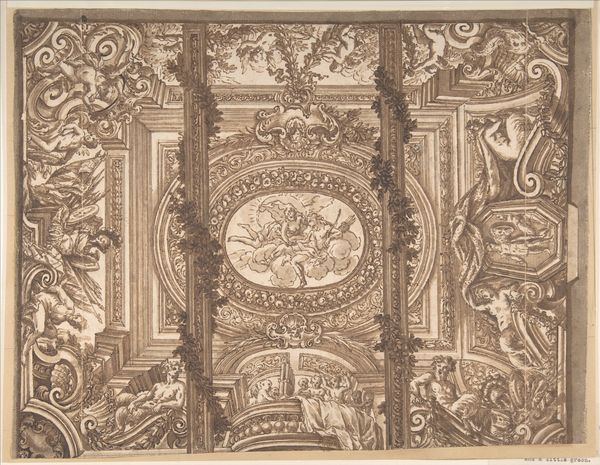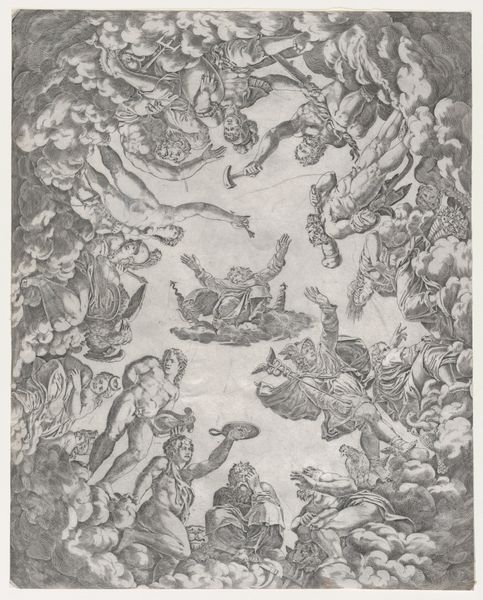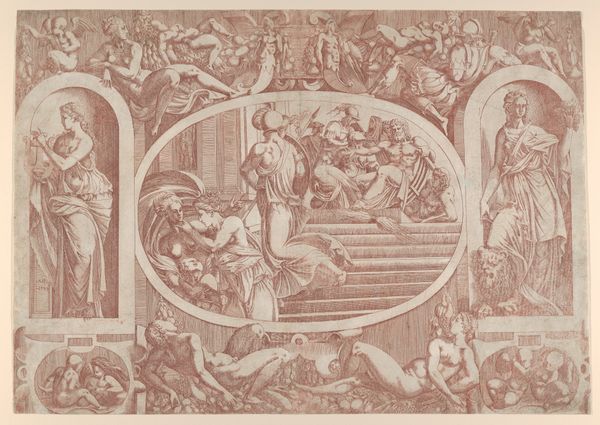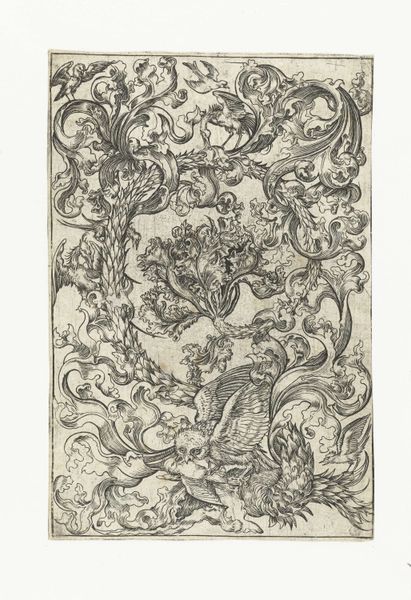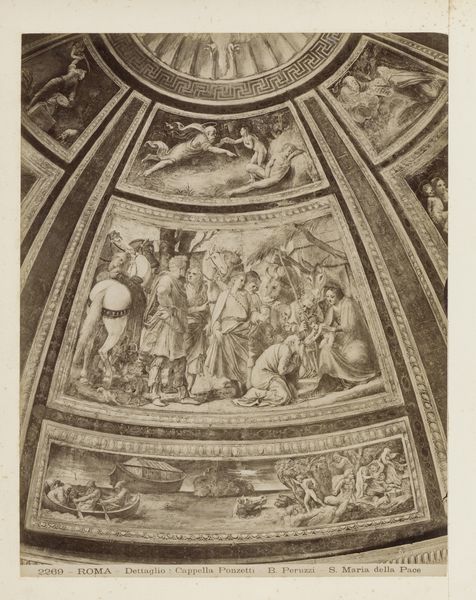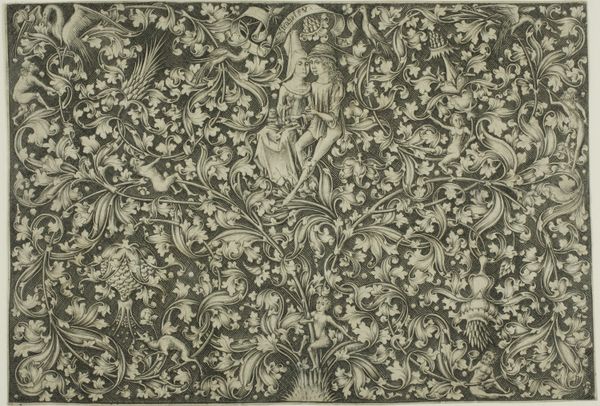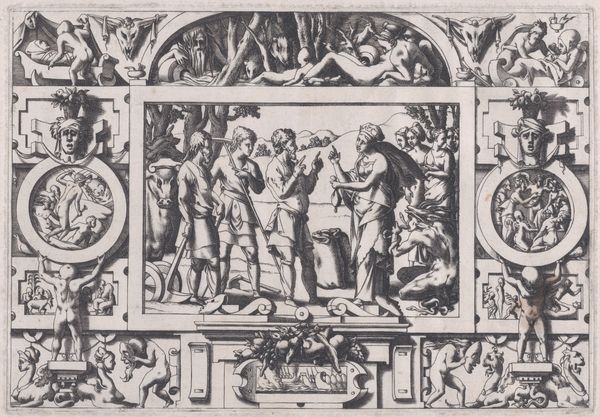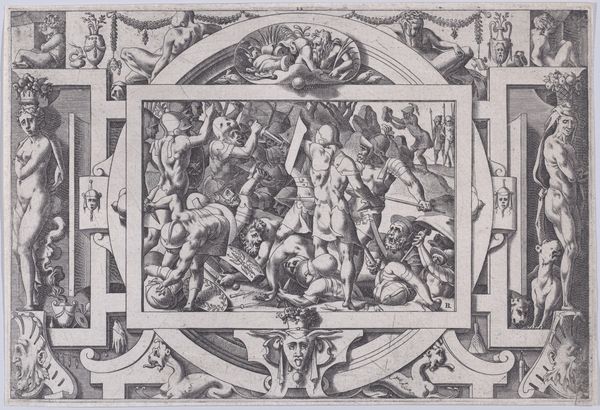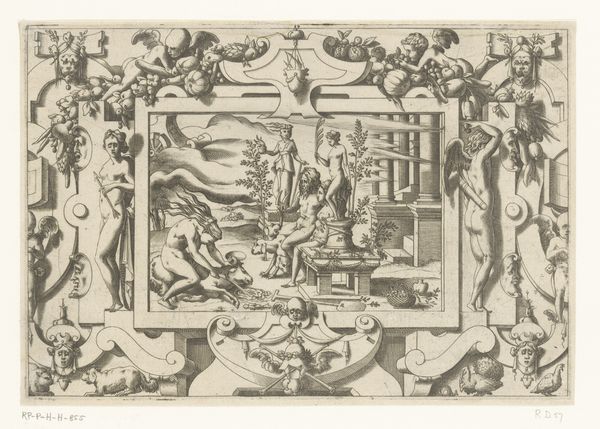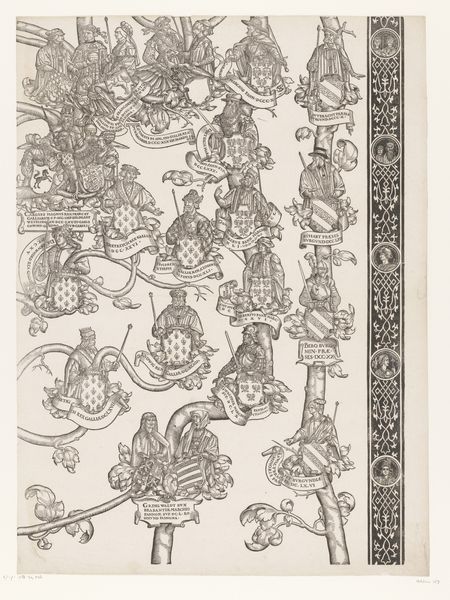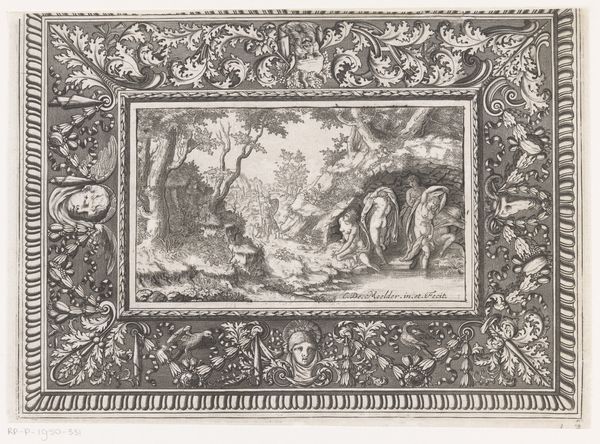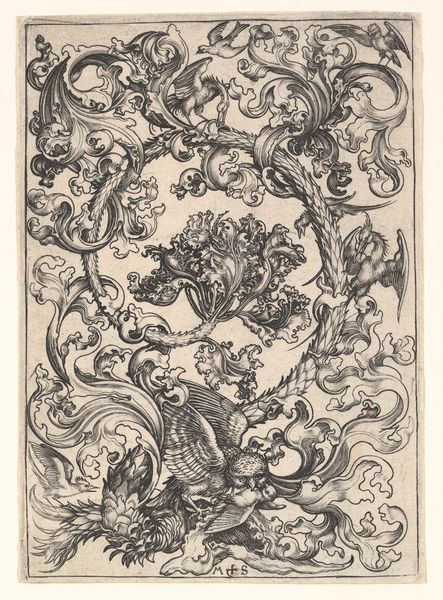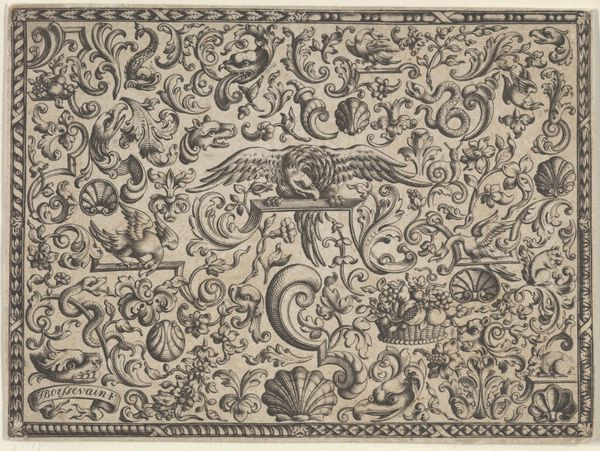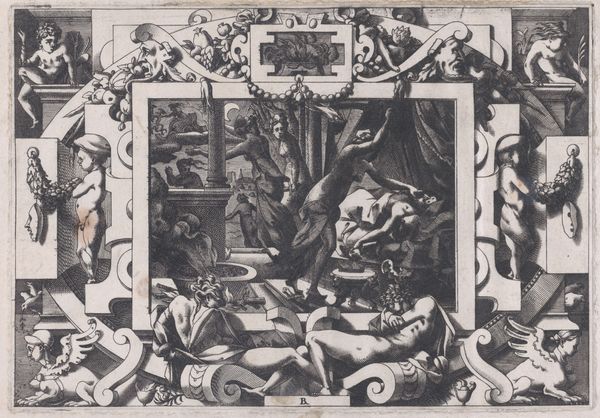
print, textile, sculpture, mixed-media, engraving
#
allegory
#
neoclassicism
# print
#
textile
#
figuration
#
text
#
sculpture
#
mixed-media
#
line
#
history-painting
#
academic-art
#
decorative-art
#
mixed medium
#
engraving
#
mixed media
Dimensions: L. 28 x W. 25 1/4 inches 71.1 x 64.1 cm
Copyright: Public Domain
Editor: This is "The Fine Arts," a mixed-media textile piece by Alexandre Buquet, created between 1825 and 1835. The pattern is very dense, like something you might see in a dream. It’s…overwhelming. How do you interpret this work? Curator: It’s a fascinating object, isn’t it? On the surface, we see a Neoclassical tableau celebrating artistic achievement, yet consider the context. The Industrial Revolution was rapidly transforming society. Mass-produced textiles were becoming commonplace. So, how do we reconcile the glorification of "fine arts," with its implicit emphasis on handcrafted skill, within a world increasingly dominated by mechanization? Editor: I see what you mean! So it’s almost…ironic? Is it suggesting anxieties about the place of art in an industrial age? Curator: Precisely. The textile medium itself is key here. Wallpaper and printed cloth were becoming symbols of bourgeois domesticity, attainable through industrial processes. But by depicting classical figures and allegories associated with high art, Buquet is raising questions about value and authenticity. Who decides what constitutes "art" when something like this can be endlessly reproduced? And what is lost – or gained – in that process? What kind of class relations does this piece engage? Editor: It sounds like a pretty radical statement, masked by a traditional style. Curator: Perhaps, or maybe it's a negotiation. An attempt to preserve the aura of "high" culture in a changing world. What do you think the repetitive pattern adds to our understanding? Editor: That's really made me rethink the piece. Thanks for pointing out those complexities; I now look at the image, the style, and material in new ways. Curator: And I see that thinking about production can prompt interesting questions about value and cultural memory, helping us both consider social narratives more broadly!
Comments
No comments
Be the first to comment and join the conversation on the ultimate creative platform.
